Rec Sports
DVIDS – News – Benelux youth set example of excellence
BRUNSSUM, Netherlands – In an age where digital devices seemingly draw the unceasing attention of youth, in the Benelux teens are making space for other activities outside the home that build character, interpersonal relationships, and skills. Recognizing the opportunities that abound in the international communities in which they live in Germany, the Netherlands, and […]
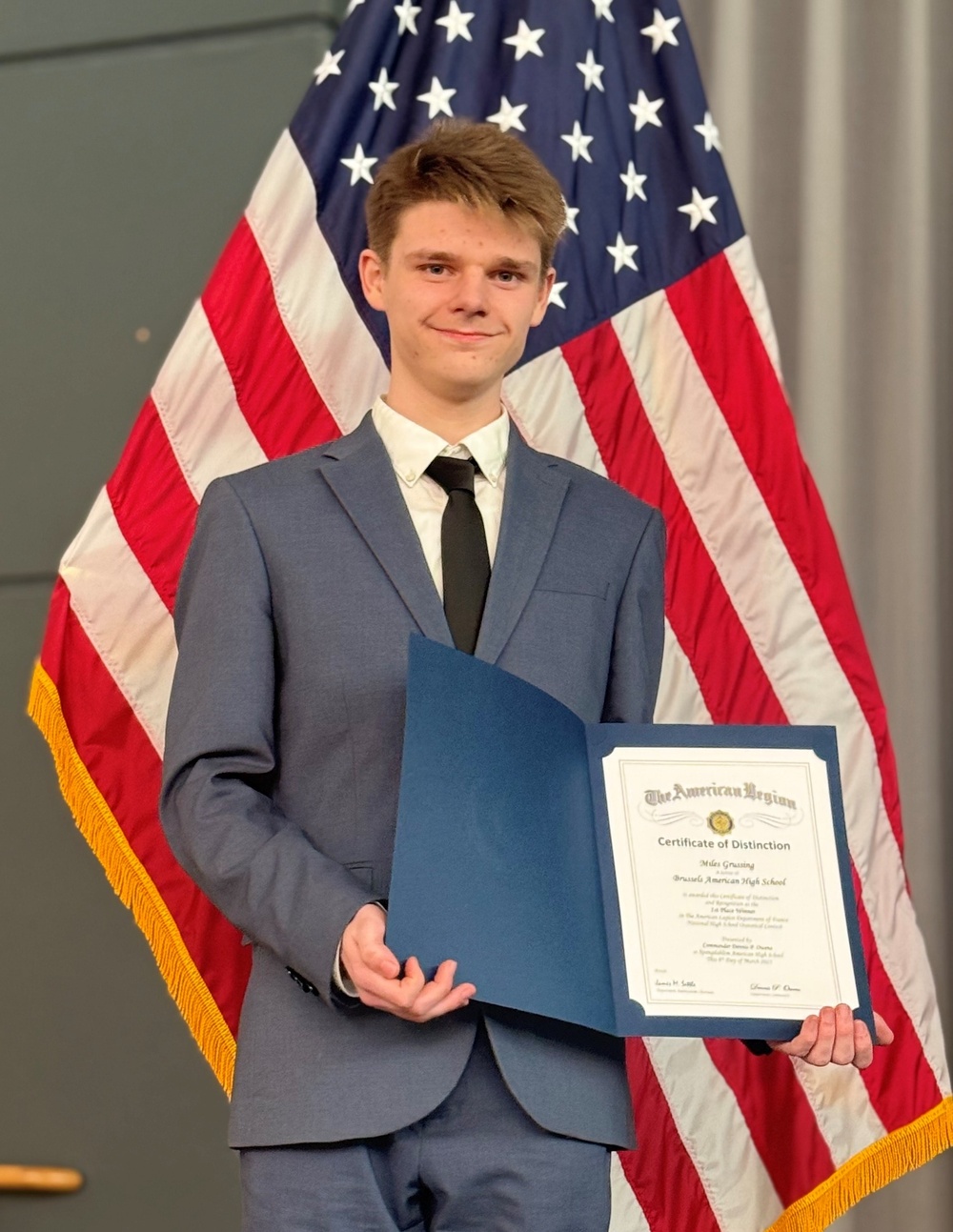
BRUNSSUM, Netherlands – In an age where digital devices seemingly draw the unceasing attention of youth, in the Benelux teens are making space for other activities outside the home that build character, interpersonal relationships, and skills. Recognizing the opportunities that abound in the international communities in which they live in Germany, the Netherlands, and Belgium, they have taken to broadening their horizons in a multitude of ways. Whether it is participating in sports, learning an instrument, or engaging in clubs, these teenagers have set the bar high for excellence.
Miles Iliff
Miles Iliff, a 15-year-old at AFNorth International School (AIS) in Brunssum, the Netherlands, completed a project last fall creating two orientation videos to familiarize incoming youth about available school activities and other ways to plug into the community. It served as the culminating project for his Eagle Scout rank with Scouting America. Friends and Family gathered in February for a celebration of his accomplishment at his Court of Honor.
He has also participated in several school sports including as a defensive lineman in American football, point-getter for his weight class in wrestling, and as a shot put and discus athlete with the track and field team.
“As a military kid and someone who moves quite often, being part of these activities has allowed me to make new friends and teammates,” said Iliff. “Being able to travel internationally to compete in sports is a unique opportunity for kids.”
Sawyer Ter Horst
Sawyer Ter Horst, an 18-year-old at Brussels Unit School (BUS) at Sterrebeek Annex, Belgium, is also an avid American football player and captain of the team. Not only has he participated as part of their championship team, but during his high school career, he has been selected for the First Team in Department of Defense Education Activity (DODEA) Europe division 3 for offense twice, the First Team in all DODEA Europe for defense, and the Second Team in all DODEA Europe for offense.
“For me I have always wanted to better myself in some way and competition is a huge motivator,” said Ter Horst. “Seeing people better than me just compels me to grow stronger and be better in any way I can.”
Ter Horst has also competed in the winter sport of wrestling and is currently coaching the new athletes on the throwing team for the school’s track and field season.
Selah Skariah
Selah Skariah, a 17-year-old at AIS, also finds her passion in sports which could be evidenced by the numerous awards she has received in basketball and soccer. Over her high school years, she has been awarded five All-Tournament honors between the two sports as well as being selected for Most Valuable Player for two years in basketball and making the All-Europe Second Team in soccer and First Team in basketball.
Even with her full competition schedule and being captain of the basketball team, Skariah also finds time to lead National Honor Society as president and participate in the International Student Council to plan events for the school and make key decisions for the senior class. This year she also delved into AVID tutoring for middle school students, helping them to organize their assignments and deadlines, balance their extracurricular activities, and build their confidence in speaking and interacting.
“These experiences have not only honed my leadership and teamwork skills but have also reinforced my commitment to contributing positively to those around me,” said Skariah.
Elizabeth Hall and Miles Gussing
Both Elizabeth Hall, a 14-year-old at SHAPE International School (SIS) in Mons, Belgium, and Miles Grussing, a 16-year-old at BUS, find fulfillment in oratorical events as they learn how to improve their speaking skills and defend their positions.
“A lot of people are scared of public speaking … but there is something really cool about being able to share ideas to a big audience,” said Hall.
She developed her skills in the speech and debate class offered at her previous overseas school, to include excelling in the semi-finals and finals tournament in different styles of presentation. Now at SIS, she participates in the Model United Nations club and learns to present on politics to garner “votes”. In her free time, Hall has spent years in scouts, dedicated time to play her instrument of violin in the school orchestra and actively competed on the swim team.
Grussing invests time in the scouting community as well and at school has joined the Chess Club and The Future Business Leaders of America. Outside of school, he enjoys independent traveling and the local theater class that he attends weekly. Most recently, Grussing’s presentation skills came out on top at the American Legion Oratorical competition as he walked away with first place at the local and regional competition and expects to attend the national contest in Michigan, USA, in May. All of his activities contribute to a strong sense of belonging in the community.
“I came to Belgium with the mindset of believing I would never quite feel at home; however, with the ability to travel, talk to locals, and … experience things on my own, [it] has allowed me the space to discover that I have never felt more at home,” said Grussing.
Shaun Reynolds
Shaun Reynolds, age 16, found his place of belonging with guitar as he has delved into all things music at AIS. Homeschooled until this year, his talent on the guitar was cultivated through hours of practice and internet tutorials. Within a year, he convinced his parents to invest in an electric guitar, and he joined the jazz and alternative ensembles to play with the AIS band. Reynolds traveled with the school to Creative Connections and the Honors Music Festival to broaden his musical experiences. Most recently, he submitted a pre-recorded audition to the Boys and Girls Club of America National Youth Talent Search through the Child and Youth Services on the JFC Brunssum installation in the Netherlands and earned an expenses-paid trip to California, USA, for the contest in May.
“The hardest part where you have the most anxiety [in performing] is right before you play the first note,” said Reynolds and went onto to explain how competition is steep. “Guitarists grow on trees. In a world where guitar is so saturated … I try to be the best at what I do.”
Aneta Stefancinova
Aneta Stefancinova, an 18-year-old at SIS celebrates her heritage through Slovakian folk dance and playing accordion. Since childhood, her repertoire consisted of a multitude of activities including various sports and contests in the field of science. As a young adult, she has continued participating in sports such as cross country and track and field and also travels with a folk dance ensemble. In her academic work, Stefancinova submitted an environmental project last year to Genius Olympiad and won a silver medal at the international round in the USA. With a youth writing program at school, she dedicated time to write two books about her grandparents and their lives. National Honor Society and the Duke of Edinburgh programs have offered space for her to volunteer for the school and the community. And her proficiency in many languages—Slovak, Czech, English, French, German and Russian—has provided connections to cultures throughout her travels to more than 40 countries.
“This helps me understand the mindset and culture of other peoples. I really appreciate being able to communicate in different languages with diverse groups of people—athletes, scientists, artists, volunteers,” said Stefancinova, adding that her broad experiences from a young age have enriched her life. “I don’t remember a year since I was a child when I just went to school.”
| Date Taken: | 04.01.2025 |
| Date Posted: | 04.30.2025 08:58 |
| Story ID: | 494185 |
| Location: | NL |
| Web Views: | 7 |
| Downloads: | 0 |
PUBLIC DOMAIN

This work, Benelux youth set example of excellence, by Sandra Wilson, identified by DVIDS, must comply with the restrictions shown on https://www.dvidshub.net/about/copyright.
Rec Sports
Environmental issues plague Blue Hill Avenue – The Bay State Banner
Extreme heat, flooding and lack of tree coverage have serious effects on the well-being of community members Katarina Schmeiszer, Grace Sawin and Ada Spiwak Nicole Flynt and Al Peeples talk about how enviornmental issues affect the community. “Green” is not the word that comes to mind when walking down the Blue Hill Avenue corridor in […]

Extreme heat, flooding and lack of tree coverage have serious effects on the well-being of community members
Katarina Schmeiszer, Grace Sawin and Ada Spiwak
Nicole Flynt and Al Peeples talk about how enviornmental issues affect the community.
“Green” is not the word that comes to mind when walking down the Blue Hill Avenue corridor in lower Roxbury. Children play in parks with patchy grass and bathe in pools of rain and groundwater on a flooded street on a hot day in summer. This sea of tar and bare concrete isn’t a consequence of weather; it is a testament to the chronic lack of greenery in traditionally low-income and minority neighborhoods throughout Boston.
Environmental issues along Blue Hill Avenue
The area around Blue Hill Avenue, the main artery spanning Roxbury and Dorchester — what the City of Boston describes as “Boston’s central spine” — is an urban heat island, where a high concentration of concrete and a lack of green spaces can lead to local temperatures up to 7 F higher than surrounding areas. The area is historically home to Boston’s Black and immigrant communities.

Each neighborhood is part of Boston’s urban heat island and is hotter than the surrounding areas, but areas like Downtown Boston benefit from increased tree coverage, which Roxbury and Dorchester lack. Source: City of Boston
Aljemall Peebles grew up on Blue Hill Avenue and is now a youth project director for Project RIGHT (Rebuild and Improve Grove Hall Together), a collaborative organization that is working to address issues of housing, violence and economic development in Grove Hall.. He has seen how the community has reacted to environmental stressors and is concerned about how excessive heat leads to more violence.
Peebles’ experiences have led to his role as a youth activity worker for Project RIGHT, which he joined to run the youth basketball league. Growing up, Peebles loved to play sports but had no access to organized leagues. . The community has been able to expand these youth programs despite adequate resources, such as proper courts or buildings with air conditioners, being available. Last summer, during a pilot program in the new facilities, temperatures reached 95 F.
Aljemall Peebles grew up on Blue Hill Avenue and is now a youth project director for Project RIGHT (Rebuild and Improve Grove Hall Together), a collaborative organization that is working to address issues of housing, violence and economic development in Grove Hall.. He has seen how the community has reacted to environmental stressors and is concerned about how excessive heat leads to more violence.
Peebles’ experiences have led to his role as a youth activity worker for Project RIGHT, which he joined to run the youth basketball league. Growing up, Peebles loved to play sports but had no access to organized leagues. . The community has been able to expand these youth programs despite adequate resources, such as proper courts or buildings with air conditioners, being available. Last summer, during a pilot program in the new facilities, temperatures reached 95 F.
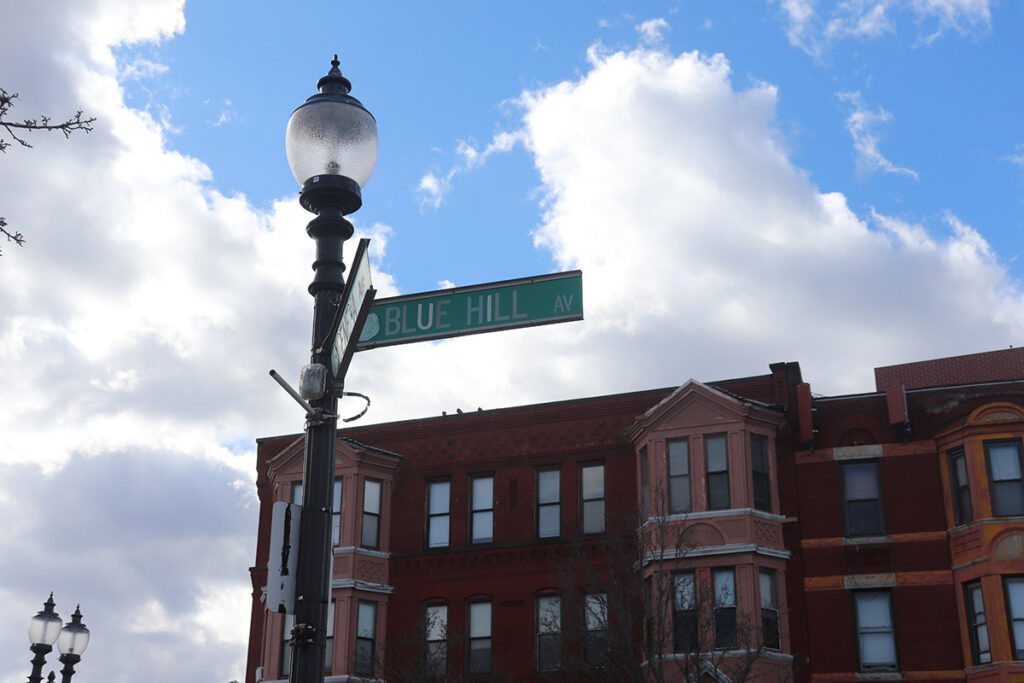
Heat islands not only exacerbate the demands for technologies that emit large amounts of climate-warming carbon, like air conditioning, but they can also worsen air quality, contributing to respiratory issues and other pulmonary health effects. In 2023, according to data from the Boston Public Health Asthma Report Roxbury and Dorchester ranked the second highest in asthma rates.
In Boston, areas such as Roxbury, the South End and Dorchester, as well as Allston and Brighton, have elevated surface temperatures.
Community Impact
Residents of Blue Hill Avenue feel these impacts every day, and as the warmer seasons approach, community members brace for extreme heat.
According to a survey conducted by the city of Boston, the burden of heat exposure in residential homes “falls disproportionately on Black and Latinx communities.” Residents often feel too hot to stay home during warmer days, leading them to find refuge in community centers.
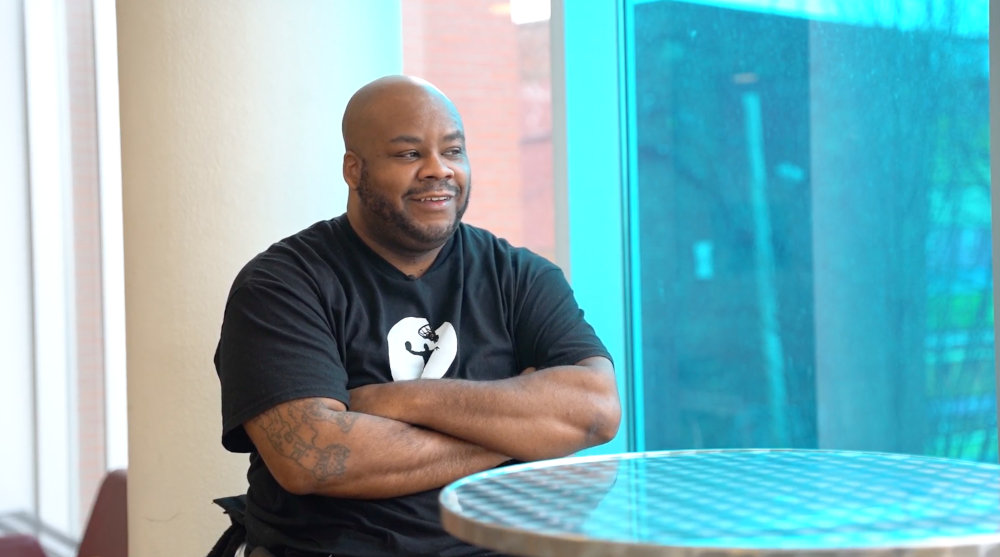
Al Peeples, youth program director for Project RIGHT, is working to address violence in his neighborhood, which is exacerbated by the disproportionately high heat Blue Hill Avenue experiences.
“We’re coming up on the summer, you will see how hot it is around here. And there’s only one cooling center… When you have a lack of cooling centers and nowhere for teenagers to go that creates a problem,” said Peeples.
Other than feeling excessive heat, residents surrounding Blue Hill Avenue also face adverse health effects because of increased dust and particulate matter in the air from pollution and mold from flooding.
“There are health implications of these issues. For example, asthma due to mold from flooding or due to air pollution,” said Moira Zellner, professor of public policy and urban affairs at Northeastern University and director/project lead of Project Common SENSES, a collaboration between Northeastern University, the communities in Roxbury and Dorchester and the City of Boston.
Project Common Senses supports environmental justice action for the neighborhoods along Blue Hill Ave. by deploying environmental sensors to make more informed decisions about green infrastructure. At the time of publication, the project has lost funding due to the Trump administration policies on diversity, equity and inclusion and National Science Foundation grant cuts.
Nicole Flynt, Grove Hall Community Coordinator for Project RIGHT and Common SENSES, said that increased construction in the area also leads to environmental is sues. The construction causes noise as well as air pollution. According to the Occupational Safety and Health Administration, or OSHA, excessive dust created by construction must be maintained through filters or water hoses to prevent spreading. OSHA also states that construction dust, including crystalline silica, can cause deadly forms of lung cancer if inhaled. Flynt said these controls are not in place in her neighborhood.
“This soot and dirt residue, or whatever residue you want to call it, on the houses, on the cars. On the sidewalks. It’s all over, and if it’s on your car, on your house, on your sidewalk, it’s in your mouth and your lungs,” Flynt said.
Sensors along Blue Hill Avenue show high levels of pollutants
CommonSENSES’ map provides real-time levels of particulate matter (PM) recorded by sensors in the area.
CommonSENSES’ map provides real-time levels of particulate matter (PM) recorded by sensors in the area.
Looking Ahead
Heat islands are more intense in areas with less tree coverage. While these areas already had more tree coverage than the downtown areas, minimal efforts have been made to increase tree coverage here to help combat intense heat.
You said:
This is Boston, divided up by neighborhood and where Blue Hill Avenue runs in Boston. Blue Hill Avenue runs through Roxbury, Dorchester and Mattapan to the edges of the city.
Here are the asthma emergency department visits among 5 to 17 year olds in Boston per 10,000 residents age 5-17. Note: Dorchester is the average of two rates. From the most recent City of Boston Heat Resilliance Plan (2023), ED visit data from 2014-2015
Here is the change in tree coverage by Boston neighborhoods. In Roxbury and Dorchester, where Blue Hill Ave runs, tree coverage has either decreased (lightest green at -0.9) or remained constant (slightly darker at 0.0).
Residents said the biggest factor that made their neighborhood hotter than other places in Boston, the most common answer was “very few trees, according to a streets and corridors survey conducted by the city of Boston,
Mockup of what an area along Blue Hill Avenue could look like with more trees. This lot is located at 639 Warren Street which currently has a plan in development to add a large residential and commercial building.
According to the Environmental Protection Agency, areas with more tree coverage can be up to 7 F cooler than areas without.
Community Action
Groups like Project RIGHT are working to achieve their goals through community engagement and activism.
“It’s an uphill battle, but what’s so amazing is the people. The community members that are constant. Constant, and steadfast, and resilient…they are here for the long run,” said Flynt.
Project RIGHT hopes to mitigate violence through community and youth involvement and create spaces that promote community building and currently has ongoing programs focusing on arts, civic engagement, public safety, sports, substance use, trauma and youth development.
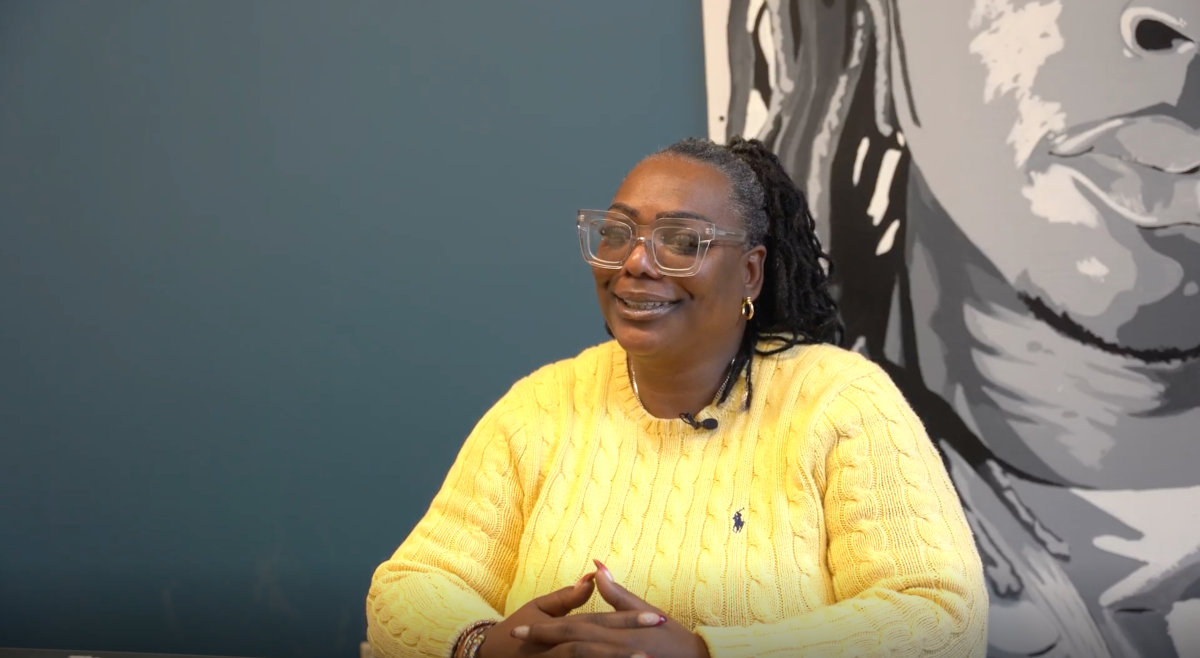
Nicole Flynt is the Grove Hall Community Leader for both Project RIGHT and Project Common SENSES, two groups working to combat the environmental injustice on Blue Hill Avenue.
“When it comes to dense or moderate to low income, or even I dare say Black and brown neighborhoods…we’re overlooked a lot,” said Flynt. “And that’s not right at all. So we have to make a change.”
For community members like Flynt, these changes would improve their quality of life for generations to come.
“I have a grandson, he is 4 years old, I want him to live a good life. I want him to run in some grass, and feel the trees and breathe fresh air without having to leave the neighborhood. We always have to leave, why do we have to leave?” said Flynt.
Rec Sports
Khalil Barnes is hosting a free youth football camp at Clarke Central
Clemson safety and North Oconee graduate Khalil Barnes is home in the Athens area to host a free youth football camp. The camp, which is set up for boys and girls ages 8-12, is to be held on Saturday, June 14, from 10 a.m. to 2 p.m. at Billy Henderson Stadium, home of the Clarke […]
Clemson safety and North Oconee graduate Khalil Barnes is home in the Athens area to host a free youth football camp.
The camp, which is set up for boys and girls ages 8-12, is to be held on Saturday, June 14, from 10 a.m. to 2 p.m. at Billy Henderson Stadium, home of the Clarke Central Gladiators located at 350 S. Milledge Ave.
Campers will receive free giveaways, t-shirts, lunch and performance training by the college junior. Registration is now closed, as the event has hit capacity.
Rec Sports
MACF invests in area rural communities | News, Sports, Jobs
Submitted Photo Minot Area Community Foundation presents a grant to the Burlington Recreation Commission. From left are Jason Zimmerman, MACF; Sarah Karhoff, recreation commission; Staci Kenney, MACF; and Shannon Hanson, recreation commission. The Minot Area Community Foundation (MACF) has announced recent rural grant recipients. Recipients include Lake County Historical Society in Kenmare, Glenburn Booster Club, […]

Submitted Photo
Minot Area Community Foundation presents a grant to the Burlington Recreation Commission. From left are Jason Zimmerman, MACF; Sarah Karhoff, recreation commission; Staci Kenney, MACF; and Shannon Hanson, recreation commission.
The Minot Area Community Foundation (MACF) has announced recent rural grant recipients.
Recipients include Lake County Historical Society in Kenmare, Glenburn Booster Club, Mohall-Lansford-Sherwood Public School District and Burlington Recreation Commission.
A $4,000 grant from MACF’s Mabel Kizima Fund was awarded to Lake County Historical Society to support the construction of an accessible boardwalk at the Pioneer Village in Kenmare. The boardwalk connects newly constructed ADA-compliant restrooms to the historical site, which includes 27 historic buildings and various exhibits, such as a dress shop, toy museum and military museum. It was built entirely by volunteers in the community.
A $5,000 grant from the Mike & Dorothy Dolan Fund was provided through the Glenburn Booster Club to help Glenburn Public School install a new playground structure, surfacing and basketball hoops. The existing equipment is more than 30 years old and beyond repair. This project serves students in Glenburn and neighboring communities, including Minot Air Force Base, Deering, Lansford and Ruthville.
A $10,000 grant, also from the Mike & Dorothy Dolan Fund, was awarded to the M-L-S school to replace the original gym floor at the high school.

Submitted Photo
Minot Area Community Foundation presents a grant to the M-L-S school. From left are: back, Jason Zimmerman with MACF, Jordyn Moberg, Emerson Lamb, Robert Zumbaum, Carson Nett, Lawson Kersten, Bryce Johnson, Ryan Anderson, Heidi Newgard; front, Sidney Knutson, Sydney Guenthner, Raegan Fitzsimmons, Staci Kenney with MACF, Matt Undlin, Abigail Buynak, Brooks Tracey, Samantha Berg and Kaden Brekhus.
A $4,050 grant from the Mike & Dorothy Dolan Fund was awarded to the Burlington Recreation Commission to support the 2025 youth sports season. The funding will go toward equipment and field supplies for programs such as Tiny Tots, T-ball for Tots, Coach Pitch & Cal Ripken baseball and elementary softball.
“Rural communities are the heart of our region, and their well-being is essential to the strength of our entire area,” said MACF President Jason Zimmerman in a news release. “We’re honored to support projects that not only meet immediate needs but also help build lasting infrastructure, community pride and inclusive spaces for generations to come.”
-
Submitted Photo
Minot Area Community Foundation presents a grant to the Burlington Recreation Commission. From left are Jason Zimmerman, MACF; Sarah Karhoff, recreation commission; Staci Kenney, MACF; and Shannon Hanson, recreation commission.
-
Submitted Photo
Minot Area Community Foundation presents a grant to the M-L-S school. From left are: back, Jason Zimmerman with MACF, Jordyn Moberg, Emerson Lamb, Robert Zumbaum, Carson Nett, Lawson Kersten, Bryce Johnson, Ryan Anderson, Heidi Newgard; front, Sidney Knutson, Sydney Guenthner, Raegan Fitzsimmons, Staci Kenney with MACF, Matt Undlin, Abigail Buynak, Brooks Tracey, Samantha Berg and Kaden Brekhus.
-
Submitted Photo
From left, Glenburn School Superintendent Larry Derr and Jaime Hauge of the Glenburn Booster Club hold a symbolic check for playground equipment, presented by Staci Kenney and Jason Zimmerman with Minot Area Community Foundation.

Submitted Photo
From left, Glenburn School Superintendent Larry Derr and Jaime Hauge of the Glenburn Booster Club hold a symbolic check for playground equipment, presented by Staci Kenney and Jason Zimmerman with Minot Area Community Foundation.
Rec Sports
Malibu Little League closes season with parade, championship, and community pride • The Malibu Times
The Reds emerged victorious in the Majors Championship Game after an intense 11-inning battle that lasted over four hours. Photo by Dana Rubin Photography Closing ceremonies united families and celebrated the resilience of a town rising Malibu Little League’s Closing Ceremonies on June 3 brought the community together in a joyful celebration of youth sports, resilience, and local […]

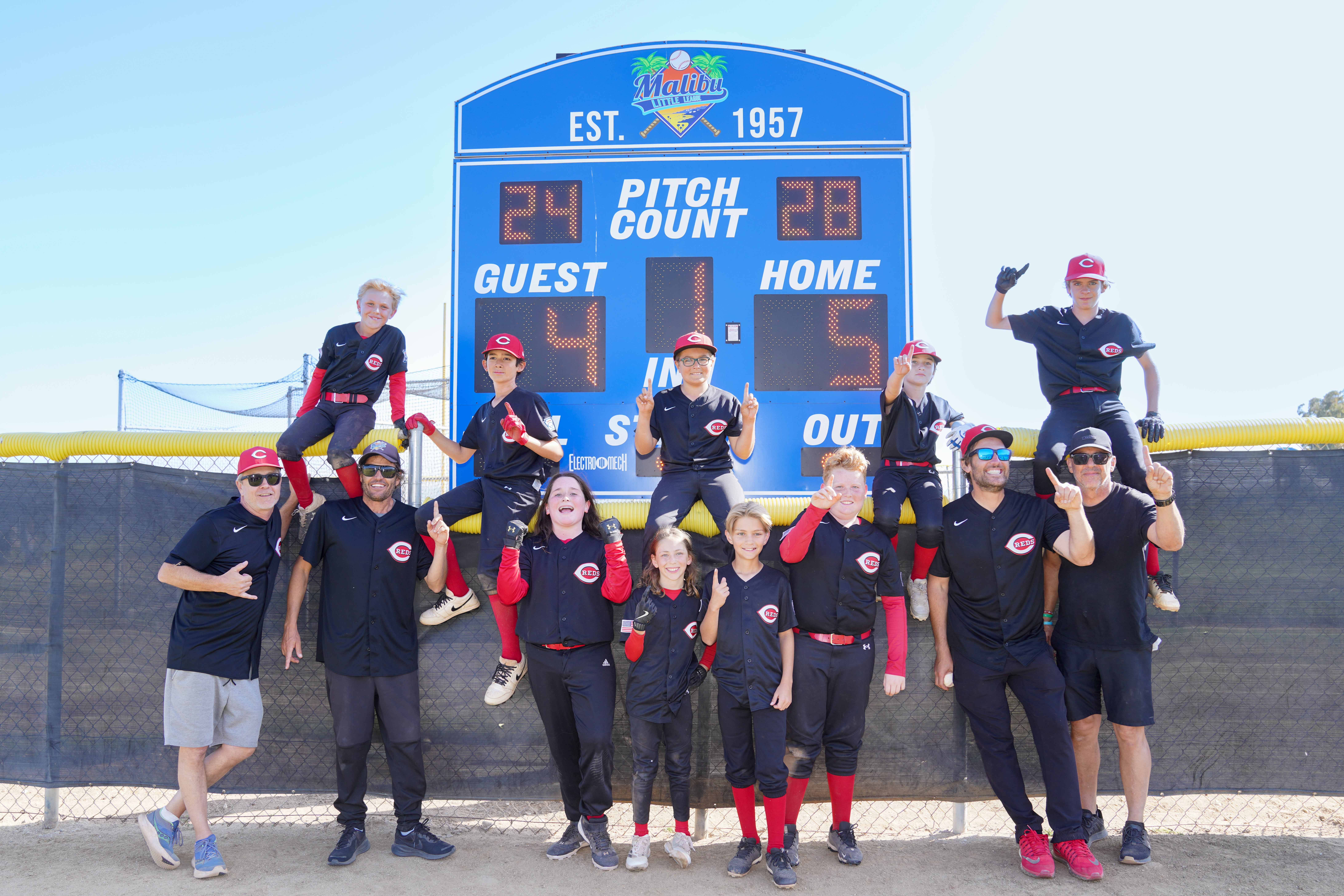
Closing ceremonies united families and celebrated the resilience of a town rising
Malibu Little League’s Closing Ceremonies on June 3 brought the community together in a joyful celebration of youth sports, resilience, and local pride. The beloved annual tradition included a vibrant parade, thrilling games, and heartfelt tributes — a day that reminded everyone of the spirit that defines Malibu.
The festivities began with a colorful parade, as all T-ball, softball, and baseball teams rode in custom floats, with teammates, coaches, and family members. Malibu Mayor Maryanne Riggins joined the procession, waving proudly with the players and celebrating the town’s youth.
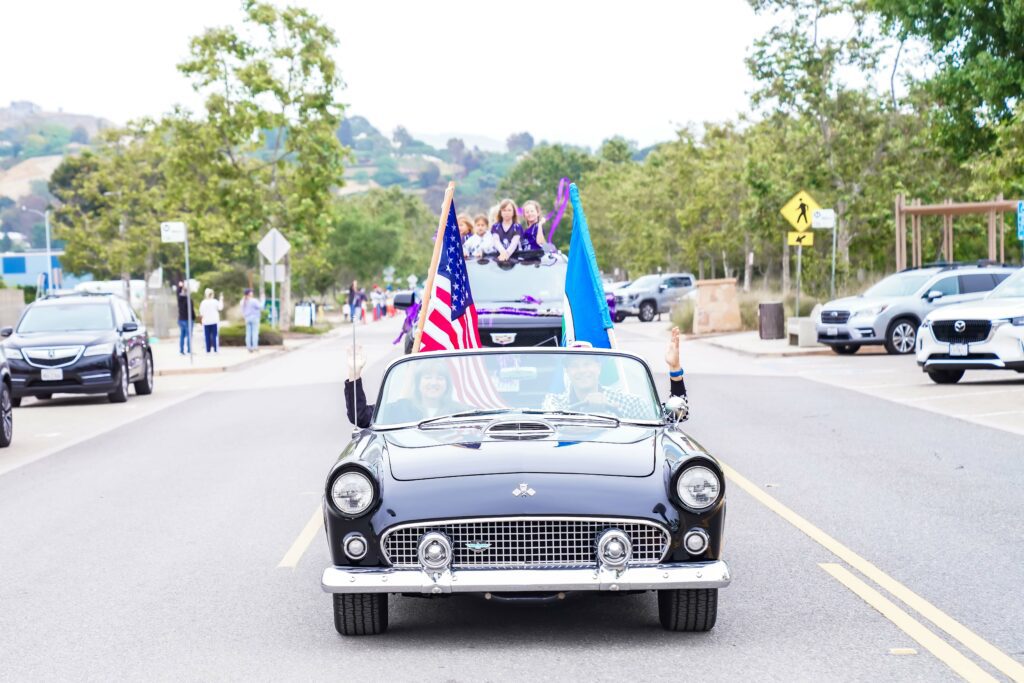
After the parade, the league’s youngest athletes circled the infield of the baseball fields, their faces lit with excitement. Awards, recognitions, and team trophies were distributed by league and city officials. Players sprinted across the diamond to collect their team’s box of trophies, laughter and music echoing from the speakers as families cheered them on.
The day’s highlight was the Majors Division Championship Game — a gripping 11-inning showdown that lasted over four hours. In a testament to endurance and teamwork, the Reds emerged victorious, closing the season with a hard-fought win that kept fans on the edge of their seats.
But the event was more than just a celebration of baseball. Earlier in the season, the league honored the Malibu Fire Brigade and Fire Department at the opening ceremony. In a symbolic gesture of gratitude, these local heroes threw out the first pitch, receiving a standing ovation from the crowd for their ongoing dedication to the community’s safety following the Franklin and Palisades Fire.
As children took to the field, their joy symbolized something deeper — the resilience of a town that continues to standstrong in the face of adversity. In the wake of the devastating fires this past year, Malibu has once again proven its strength, unity, and ability to come together and play on.
Malibu Little League remains a vital part of the community — a place where friendships are built, confidence is nurtured, and the next generation learns what it means to be part of something bigger than themselves. This season was not just about the game — it was a celebration of hope, healing, and the bright future ahead.
The Malibu Little League closing day parade on Saturday, June 7. Photos by Emily Scher/TMT
Related
Rec Sports
Louisville’s run to Men’s College World Series in part due to Black baseball pipeline — Andscape
OMAHA, Neb. — Not all double plays are turned equally. When the Louisville Cardinals’ battery adroitly pulled off a successful 1-2-3 double play in the top of the sixth inning at Jim Patterson Stadium last week, complete with a fantastic stretch at first base to snuff out a bases-loaded situation and end the frame while […]

OMAHA, Neb. — Not all double plays are turned equally.
When the Louisville Cardinals’ battery adroitly pulled off a successful 1-2-3 double play in the top of the sixth inning at Jim Patterson Stadium last week, complete with a fantastic stretch at first base to snuff out a bases-loaded situation and end the frame while keeping the score tied — whew — you felt it.
From there, they could smell Omaha and the Men’s College World Series.
If things like team yearbook reels were still a thing, there’s an argument that play could open the entire table of contents. It was bang, bang – it mattered and the crowd went nuts. Even the first umpire delivered a punchie for the ages. That’s the kind of special moment you almost have to have on a team to believe you’ve got a chance to win the whole thing.
But the man who put the Cards ahead, on a useful looper over the shortstop’s head that got just under the center fielder’s glove, was none other than Eddie King Jr. — a name that you might not know you remember.
“It was the first time I ever really signed autographs. And, you know, people kept coming up to me asking for pictures. I felt like a celebrity,” King said this week, describing his first brush with the spotlight in baseball, long before he became a household name in Atlantic Coast Conference baseball circles. “That was a really cool experience. Not too many people will ever get to do something like that. Then we met the president, too. So, yeah, that was also really cool for us.”
What many people look back on as an awful injustice that highlighted the fundamentally unfair nature of youth sports as it relates to participation, sportsmanship and the American Way, the senior sports administration major reflects on his younger diamond days with reverence.
King was the youngest player on the Jackie Robinson West team that was stripped of all its accomplishments as U.S. Champions at the 2014 Little League World Series after a rival coach started investigating the boundary limits of the league and its players, who were ultimately found to be ineligible. It was one of those cruel reminders that not only will some people do everything to make sure that some kids don’t succeed, but also that matters as trite as what addresses we hold can determine success.
King still wears No. 42 to this day. He was named Super Regional MVP, going 6-for-10 with two home runs, four RBIs, two doubles and a walk, while playing two outfield positions and designated hitter. The trophies haven’t taken the memories from him.
“We shared the dorm with the Australians [in Williamsport, Pennsylvania, home of the Little League World Series]. That was fun, just being around them and seeing how they are,” King said. “That was also a really fun time. So now it’s like, I have a bunch of brothers that I know now from that [Jackie Robinson West] team.”
At the collegiate level, it’s easy to look at most talent as existing in the binary of either “raw” or “pro-ready,” but many around the program have seen firsthand how King has gone from the former to the latter right before their eyes.

John Byrum/Icon Sportswire via Getty Images
“He is the most humble and at-ease superstar. He will sign your autographs. He’ll smile occasionally. He’s never too high, he’s never too low. But he’s also a guy at the plate that I think is our most astute hitter,” Sean Moth, play-by-play voice of the Cardinals for more than two decades, said Thursday at their workout day.
“He will see a change-up, maybe have a bad swing and miss, and it may not be that at-bat that he’ll turn it around and put it down the left-field line for a base hit. But later in the game, if he faces that same pitcher, he files it away. And he’s got a very cerebral approach to the game.”
There was a time when King’s future at Louisville was genuinely uncertain. Time, injury and circumstance nearly cost him his chance, but after a freshman year in which he literally did not play, he’s going from the Little League World Series to the College World Series with 6,000 people in the home crowd chanting his name all along the way.
“I sat him down in my office, just being real. Like, I don’t want to pat kids on the back and act like everything’s gonna be OK,” Louisville head coach Dan McDonnell said of that encounter with King years back. “I said, ‘Eddie, I honestly don’t know if you can play here, like I didn’t get to see anything your freshman year. I’m losing two senior outfielders. I need a centerfielder, and we projected you as a centerfielder. But man, [you’re] a guy that hasn’t played all year.’
“So I said, ‘Here’s what we need to do. You need to go out this summer and you need to show us. If you go out this summer, and you can’t play, how can you come back to Louisville, right?’ And what I love about it was, he didn’t act like a baby, no entitlement. It was like right out of the chute, ‘I gotta earn it.’ And I give Eddie a lot of credit, because he went out, he was the MVP of the Prospect League.”
While King is a standout talent, he didn’t just come out of nowhere. It wasn’t happenstance that a Chicago kid ended up at Louisville. Coach Mac, as he’s known, has had a pipeline from Chicago for more than a decade. Coincidentally, it all started for the most part right there with a family member of Eddie’s: his older cousin, former Louisville outfielder Corey Ray.
“I didn’t know that I was related to Eddie until he committed to Louisville. My grandmother, who knows everyone, told me. She says, ‘Hey, you have a cousin that just committed to play baseball at Louisville,’ ” Ray said, with the quizzical tone you get when a relative drops some lore on you that you could have never imagined. “So naturally, he became one of my favorites.”
Ray, who was drafted twice in his amateur career, was one of the first players who made folks sit up and notice what was happening with this link between Chicago and Louisville. He started 19 games as a freshman and every game as a sophomore. That first year, the Cardinals went to Omaha. An incredible blur on the field, Ray was a must-see player in college baseball.
“We had had this pipeline going in Chicago, but Corey was a big name. And I think he knew what type of program we were, very aggressive on the bases, very aggressive, offensively fun. Fun type of system to be in,” McDonnell said. “I tell this story a lot to kids in our program. I said, ‘Players, what you got to understand is we’re not changing for you. You have to change and make the adjustment, and not for us, per se, but for the game of baseball. We’ve been doing this a long time, so you got to be able to adapt.’ Corey was one of those. He just didn’t look like he was making the adjustment, not being stubborn, but just mechanically. He was so athletic and so talented.
“He was low maintenance. Wasn’t any drama. Punched the clock every day. His first start, [we] were, like, 40 games in, and I finally said, ‘I gotta give Corey Ray a chance here,’ ” McDonnell said. “And he gets two hits. Oh, another chance. Gets two hits, and Corey starts, I think, like every game. I think we lose in the conference tournament finals, and then we host a regional. We win a regional. We host a super regional; we win a super regional.
“Now he’s a starting freshman, hitting in the six hole, but just very quietly didn’t exaggerate his struggles, didn’t make a big deal about it. Just started to make the adjustments little by little, and one day, man, it clicked, and he didn’t come out of the lineup for two and a half years.”
Why does that matter? Because now, it seems like at least one organization understood that Ray’s understanding of the game is just as important as his ability to round the bags. He only play one career game in the big leagues (in 2021 for Milwaukee), and in that game he did score a run.
The year after his pro ball dreams ended, the Chicago Cubs hired him as their Single-A bench coach with the Myrtle Beach Pelicans. Now, he’s a coordinator and field manager with the franchise and does quite a bit on the player development side.
Trust me, it is not easy to find your way into the coaching ranks in baseball even if you had a robust pro career, so for a guy who’s still relatively young (30), Ray is well on his way to being a skipper somewhere. Reminder: If you think the number of Black players on the field is small, try looking into a dugout when the team is on the field. You’ll find even less of us as coaches and managers.
At the risk of getting into a lengthy sidebar about how diversity in the game is as much of a trickle-up process as anything, seeing a college program that regularly attracts Black talent as a Power 4 school is refreshing. To know that it’s coming from an actual place of connectivity and not just availability makes it feel more genuine. To think that one of its more well-known alums is breaking the plaster coaching ceiling, albeit one step at a time, feels like real progress.

Dennis Hubbard/Icon SMI/Corbis/Icon Sportswire via Getty Images
McDonnell vividly remembers the moment he realized Ray would make a good educator of the game and leader of men. When Ray would return for offseason workouts at Louisville during his pro career, the college guys would listen to him when he gave them pointers.
“It gets to the point where you’re like, you’re wanting these guys – the pro guys – to be around, you know, because when they speak it’s like the Holy Grail. I speak, I’m like the old dad,” McDonnell said, laughing. “But when the pro guy or the big leaguer speaks, it’s like, ‘Corey Ray said I need to.’ We’re like, ‘Yeah, we’ve been saying that for three months.’ ”
In all seriousness, McDonnell’s got another guy in Chris Dominguez who turned into a coach as well and actually faced off against Louisville in the super regionals (Dominguez, 38, is an assistant coach for Miami who played for Louisville from 2007-09).
“While Corey was moving up the ranks and pro ball, I thought, ‘Man, this guy’s gonna be a good coach one day.’ And that’s cool. He’s phenomenal,” McDonnell said of Ray. “The Cubs are blessed to have him. Every time he comes back, he’s just thirsty to share. I’m very confident he will be a great college coach. I’m not saying he wants to or he will cross [over to the NCAA], but, yeah, I definitely see it because he’s got great personality, a great smile. I know he’ll connect with college kids. I know parents will trust him.”
The ACC, where Louisville has landed after stints in the Big East and American Athletic Conference, has never had a Black head baseball coach.
As for Ray, he’s someone who likes what he’s seeing from his alma mater.
“Zion [Rose] and I have talked a lot in the past year or two about what to get out of the experience at Louisville, why it’d be beneficial for him to stay. He’s a really good player,” Ray said. “He gets pulled in a bunch of different directions, and it’s a testament to Coach Mac and coach [Eric] Snider. They’ve been able to keep him there, and he loves being there. He’s glad that he stayed there.
“Zion is one of my favorites. Eddie’s one of my favorites. The center fielder who broke my stolen base record [Lucas Moore] is one of my favorites. I like the team as a whole. I think that the offense is very versatile, and I think the team spending time there on campus this summer and this spring is kind of a mirror of how we were when we were there in the early stages, right? We don’t care who we’re playing. We don’t care how much money you’re making.”

AP Photo/John Amis
McDonnell isn’t exactly a funny guy, per se, but he knows how to make people laugh. He also knows how to make them think. He also knows when to keep his mouth shut. As a man of Christian faith, he holds nothing back when discussing his identity.
“You don’t have to be a Christian in our program. If anything, our whole motto is to love and to serve. So you can be any religious faith. You can be any nationality. It doesn’t matter. We’re just going to love on you. We’re going to serve you. That’s what we’re called to do,” McDonnell said Thursday following his team’s practice.
“But I’m sure we attract a lot of spiritual kids from spiritual families. But like I said you don’t have to. So that presence, maybe even in the transfer portal, bringing some older kids, 22-, 23-year-olds, that not only have a strong faith but you’re much more mature than you were probably at 18 and 19. And so it’s just who we are. It’s impressive. I think about that age. I wish I had more wisdom, a stronger faith and made better decisions. They know from me at least, when we talk about being a Christian, they know I’m not perfect. They see my best and they see my worst.”
One of those kids is Kamau Neighbors, who transferred from Cal State Northridge and was named a team captain. For McDonnell, it’s something that’s gained him trust in a lot of spaces. You don’t just walk into living rooms and start telling families, particularly Black ones, that they need to turn down real money to trust him with their son. And it doesn’t always work out for everyone, but when it does, it’s as much an outcrop of McDonnell just being himself, a guy with world experience.
We’re talking about a guy from upstate New York, who played at The Citadel, a military school in South Carolina. Now he’s been a longstanding head coach in a baseball-loving state, the only one of which at this MCWS actually has two teams, if you include Murray State.
The concepts of faith and family that extend to his team are a large part of why certain players get chances. That’s how the Chicago pipeline got started to begin with, to an extent. For Kenny Fullman, who helped start the Chicago White Sox Aces program, the process of creating a relationship wasn’t dumb luck.
Coaches know coaches, coaches know players, players have families and those families put faith in people. After a while, taking their kids to camps all over the country, eventually the Aces and Louisville had a clear connection that was helped by a little, well, spirited cajoling, shall we say.
“You make Louisville seem like it’s great, when where we grow up and we play in the snow and it’s cold and we’ve got to play a game in 30 degree weather in March. You go to Louisville and it’s 50, it feels like it’s spring. And so [McDonnell] is taking advantage of making Louisville seem like it’s South,” Ray said, with enough of a wink to remind you that the distance between those places is less than 300 miles.
Another thing that doesn’t come without some level of intention: For lack of a better term, you ain’t gonna get far trying to separate Black families. We know that experience generationally and even in good faith efforts such as baseball, that’s one you’ve got to get right to make sure that people feel safe.
“He likes the parents to be able to be within a day’s drive at the ballpark. So you know, Friday afternoon, if they take off work, they can make it down to [Louisville], catch a game, maybe stay overnight, catch another game Saturday and be able to get back. And so luckily for us, depending on traffic, you’re about a five-hour skim right up to get in the Chicago area,” Moth said.
Why every Major League team doesn’t have a travel program like Ace is beyond me. That’s perhaps another story for another day, but they don’t turn out losers.
As for family, both Ray and King have had two influences that are impossible not to acknowledge, and McDonnell hasn’t gotten in their way and wouldn’t think of it. When Ray was considering his options in baseball, there was a lot of thought in his family that going pro was a better option.
Except for one person: his older sister.
“I always give Corey sister a lot of credit. As a guy, I’m all about the dads and how much they pour into their sons. But like Eddie’s sister, she’s sharp,” McDonnell said regarding the recruitment of Ray. “She was in grad school, and here’s her younger brother, about to start college. We’re sitting at the table, and she is very engaged, very involved. And I’m like, ‘you know, I’ve been doing this for 30 years. I’ll walk out of somebody’s house and I’ll call our assistants, and I’ll be like, man, I don’t know if that dude’s showing up, right? … I walked out of Corey’s house. Bop into my car. I called our assistants. I said, ‘Hey, man, Corey Ray’s coming to school, how about that? I feel as good about him as I’ve ever felt.’ And they’re like, ‘Why you say that? ‘And I said, ‘the sister is all about education. She’s all about him getting his degree. She sat at the table. She was engaged, she made it sound like there’s no way we’re letting Corey sign [pro].’ ”
Back in Omaha, however, King — Louisville’s current star — has fans everywhere. The ones in his own home – -the people back at Ace who’ve seen him grow since he was 10 — are most happy to see show up. Fun fact: Eddie has a twin sister, who also goes to Louisville.
“I’ve been knowing the family, like I said, since Eddie was 10, and they’re just great people, man. The dad is a lot of fun to be around, and the mom is just extra-supportive,” Fullman said. “Always have been. And I looked on the TV today, the mom and daughter were in the front row.”
Like many Chicago folks who’ve come through Louisville, they had faith and found a family.
“I’m not worried about the color of their skin, man, I’m just not,” McDonnell concluded. “And I’m not going to act like, you know, I’m trying to break racial barriers and I sought to do that, okay? Just, you know, I just, I see people, and I love on people.”
In 2025, that seems like an effective method for success.
Rec Sports
Youth Summer Sports Camps Coming Up with Jefferson Parks and Rec | Raccoon Valley Radio
There are just a couple of days left for the next set of summer youth programming with the Jefferson Parks and Recreation Department. JPRD Assistant Director Henry Pohlmeyer says there are two Summer Sports Camps coming up, with the first one for kids going into first through third grades from 1-4pm this coming Monday through […]
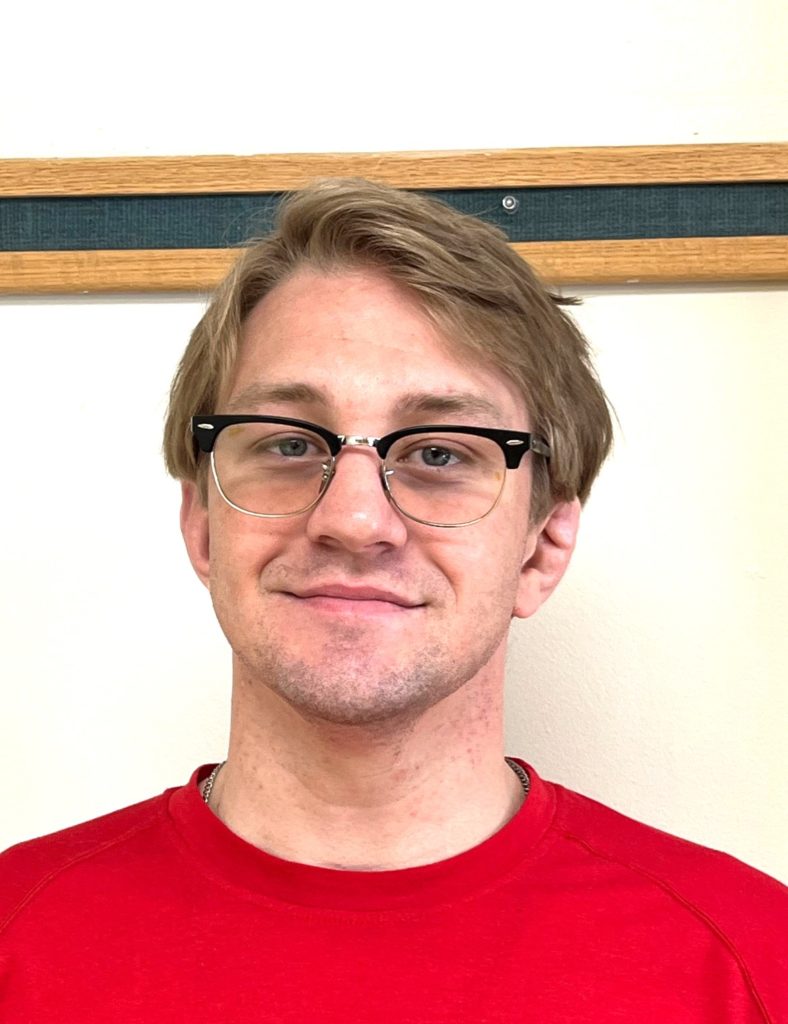
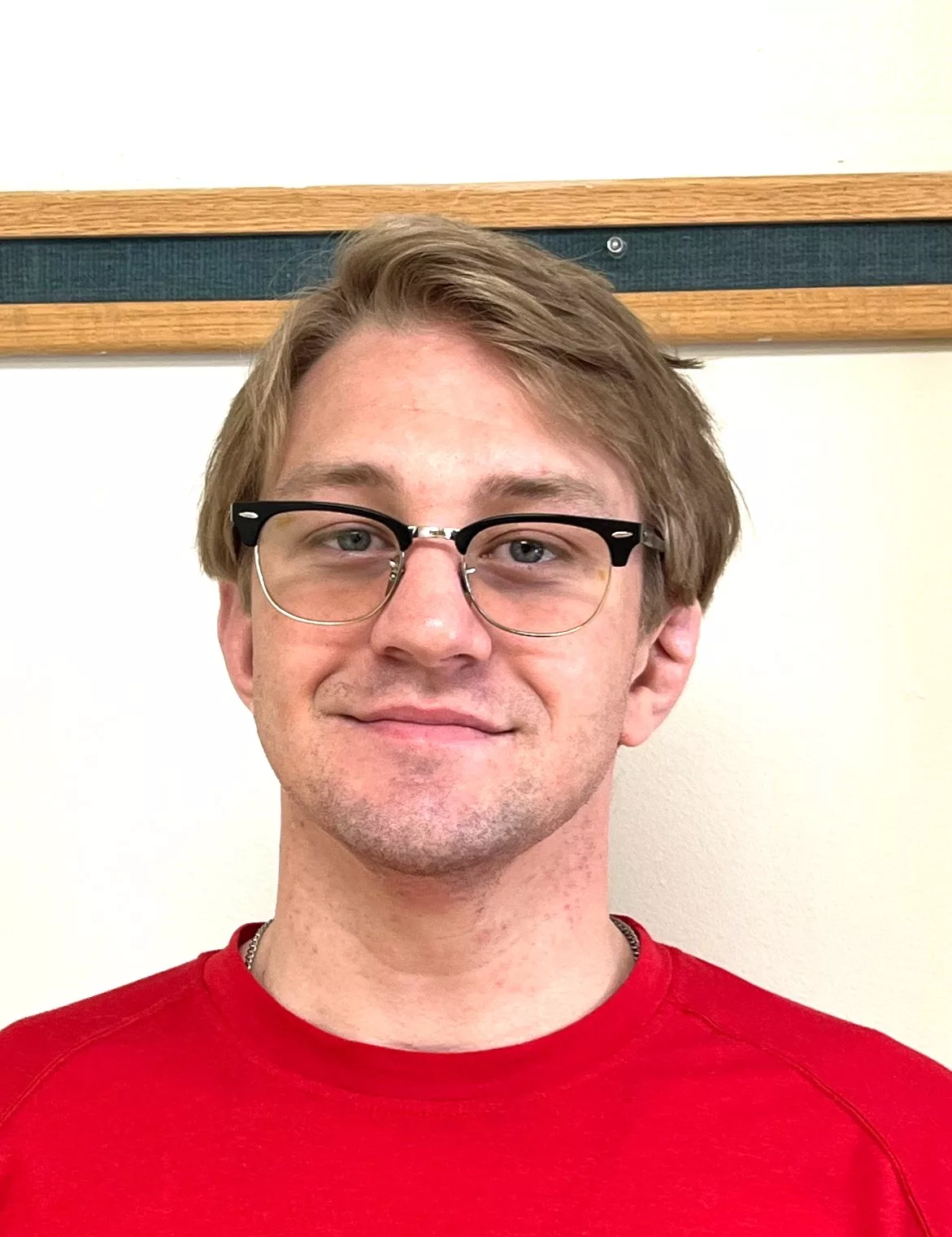
There are just a couple of days left for the next set of summer youth programming with the Jefferson Parks and Recreation Department.
JPRD Assistant Director Henry Pohlmeyer says there are two Summer Sports Camps coming up, with the first one for kids going into first through third grades from 1-4pm this coming Monday through Wednesday. The second Summer Sports Camp is for youth going into fourth through sixth grades also from 1-4pm from the following Monday through Wednesday. Pohlmeyer notes for both camps, kids will learn about basketball, soccer, kickball, dodgeball, football and bowling.
He talks about his favorite part about having these types of programs.
“It is a very good introductory to just a vast variety of sports. So if you are very involved in baseball but have never really tried soccer, or vice versa, it is a great opportunity to kind of dip your toes into a sport. It’s a good way to socialize with friends. It’s a good time for everybody.”
The cost to participate in either camp is $20 for Greene County Community Center members and $25 for non-members. Contact the community center at 515-386-3412 or click here to sign up.
-

 Health1 week ago
Health1 week agoOregon track star wages legal battle against trans athlete policy after medal ceremony protest
-

 Professional Sports1 week ago
Professional Sports1 week ago'I asked Anderson privately'… UFC legend retells secret sparring session between Jon Jones …
-

 College Sports2 weeks ago
College Sports2 weeks agoIU basketball recruiting
-

 NIL3 weeks ago
NIL3 weeks ago2025 NCAA Softball Tournament Bracket: Women’s College World Series bracket, schedule set
-

 Professional Sports1 week ago
Professional Sports1 week agoUFC 316 star storms out of Media Day when asked about bitter feud with Rampage Jackson
-

 Rec Sports2 weeks ago
Rec Sports2 weeks agoScott Barker named to lead CCS basketball • SSentinel.com
-

 Rec Sports2 weeks ago
Rec Sports2 weeks agoJ.W. Craft: Investing in Community Through Sports
-

 NIL3 weeks ago
NIL3 weeks agoGreg Sankey: ‘I have people in my room asking, why are we still in the NCAA?’
-

 Motorsports2 weeks ago
Motorsports2 weeks agoNASCAR Penalty Report: Charlotte Motor Speedway (May 2025)
-

 College Sports3 weeks ago
College Sports3 weeks agoOlympic gymnastics champion Mary Lou Retton facing DUI charge




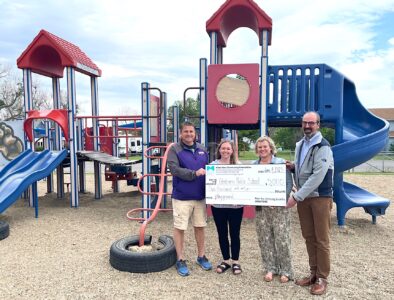














 – Perk | First Take
– Perk | First Take













